Hummingbirds and Bats
of Southern Arizona
TRIP REPORT, 2012
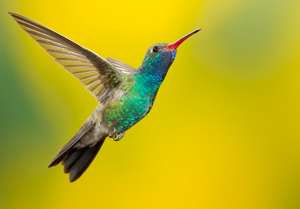
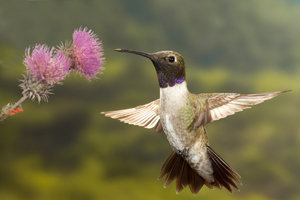
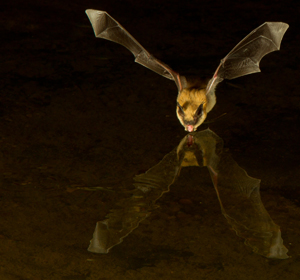
Unless otherwise noted, all images in this report are from one of our participants, Christian Biemans, from Holland.
We were quite concerned, this year, about our Arizona Hummingbird and Bat Shoots. Scheduling this trips one year in advance, unexpected or unknown variables can appear, potentially influencing the outcome of a shoot or the success of the adventure.
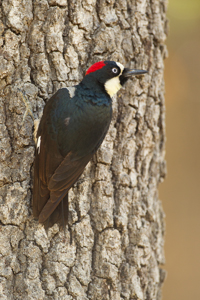 During the autumn of last year, the lodge that we use, the Santa Rita Lodge in Madera Canyon, renovated some of their facilities. A new gift shop was built, which took out one of our 'natural light' sets and also one of the locations where we normally position one of our hummingbird sets. A schedule glitch at another location, where we normally have participants spend one morning photographing desert birds from a blind, bumped us out of that location as well. Finally, the lodge also suggested that we break a tradition of twenty years and move our cabin to a new and bigger room, which separated us from our 'equipment and headquarters' room by the entire length of the lodge, a 150 yard separation. With all of these changes, we worried that the shoot might not be as successful as we'd normally expect.
During the autumn of last year, the lodge that we use, the Santa Rita Lodge in Madera Canyon, renovated some of their facilities. A new gift shop was built, which took out one of our 'natural light' sets and also one of the locations where we normally position one of our hummingbird sets. A schedule glitch at another location, where we normally have participants spend one morning photographing desert birds from a blind, bumped us out of that location as well. Finally, the lodge also suggested that we break a tradition of twenty years and move our cabin to a new and bigger room, which separated us from our 'equipment and headquarters' room by the entire length of the lodge, a 150 yard separation. With all of these changes, we worried that the shoot might not be as successful as we'd normally expect.
Our fears proved unneccessary, as everything worked out quite well. Although we lost our traditional 'Set Four' because of the Gift Shop we simply moved that down to the lower cabins, where Mary and I slept and where Mary cooked the lunches. This did result in Mary often supervising the two lower sets, Four and Five, while I worked with the other three sets at the upper end of the lodge.
The cabin we now lived in was like a little house, and actually provided far more room for accommodating our stuff, and Mary's cooking, and also ended up to be a comfortable location for our meetings, teaching, and portfolio presentations. Within a short time Mary had Black-headed Grosbeaks, Lesser Goldfinches, White-breasted Nuthatches, Western Gray Squirrels, and Pocket Gophers all feeding around our cabin, just as we had in previous years up at our old room.
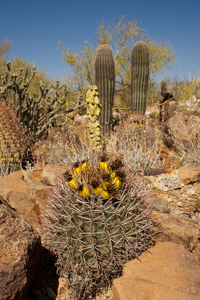
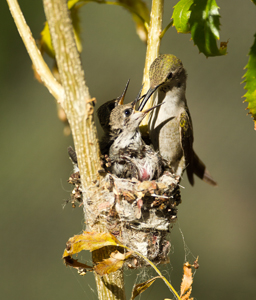
Barrel cactus and young saguaros at the Museum, and an Anna's Hummingbird at the Desert Museum nested in the aviary, right next to the trail, affording great opportunities.
We substituted our desert bird photography location with a group trip north to Tucson and the spectacular Arizona-Sonoran Desert Museum, one of the finest facilities in the country. The museum is actually more of a zoo, with wildlife and plants, as well as numerous informative exhibits, that solely features animals and plants native to this ecological region. Some of the highlights of the museum include a great enclosure for native lizards, a large aviary where hummingbirds fly free and nest, and exhibits featuring Mountain Lions (Pumas), Bobcats, Desert Big Horn Sheep, Mexican Gray Wolves, Black-tailed Prairie Dogs, and a wonderful underwater viewing area for River Otters.
Additionally, prior to the Museum opening we took the time to teach and to do a panoramic shot of the Saguaro-studded desert that surrounds the museum.
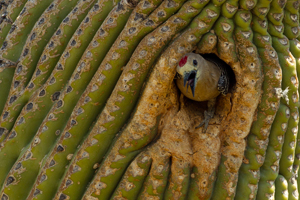
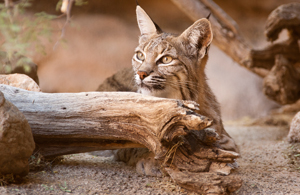
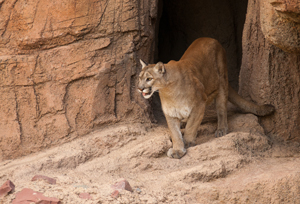
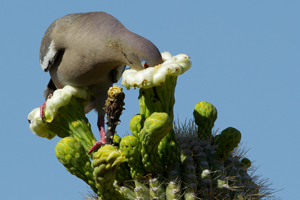
Birds, this year, were surprisingly scarce, and birding facilities throughout the area reported either a late migration or strangely reduced numbers. As usual, we set up our own 'natural light pond' where we erect a 4x8 pond on saw-horses, allowing photographers to shoot birds at the pond from a water-level perspective, without lying on the ground. Normally birds visit this feature and the feeders surrounding it by the dozens, but this year visits were scarce and the numbers low. This was disconcerting, and very worrysome, and I hope this doesn't indicate some disasterous trend. On the positive side, towards the end of our stay birds seemed to be increasing in numbers, so perhaps the migration was just late.
Normally, as we're leaving Arizona the first 100 degree day in Tucson was still to arrive, but this year summer, or extremely hot temperatures, arrived over two weeks earlier. Accordingly, Saguaro cactuses were in bloom much earlier than usual, and the Lesser Long-nosed Bats that usually visit the hummingbird feeders, and our camera traps, did not appear, as food was now abundant in the desert where the bats fed on the desert flowers.
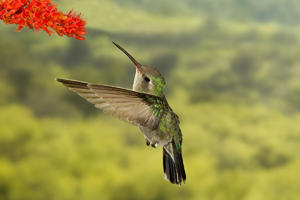
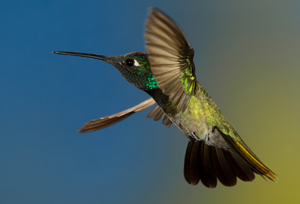
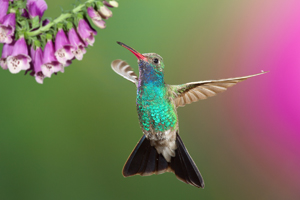
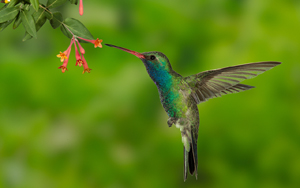
Our hummingbird sets, however, were as busy and active as ever, and our various groups photographed Magnificent, Broad-billed, Black-chinned, Broad-tailed, and a few Anna's Hummingbirds during the period.
A small stream runs through the canyon just behind our lodge and some years, this being a desert, the stream is bone-dry. Last year, because of an usually wet spring the stream ran like a small creek, which translated into no bats for photography as the bats could fly anywhere for a drink. Ideal conditions exist when the stream is nearly dry, with limited waterholes where the bats can drink and where we can place our camera set-ups. This year, the conditions were approaching ideal, as the stream was running low but there was still too much water in various areas to concentrate large numbers of bats at our pool. Nonetheless we did get some nice shots, although the opportunities there were limited.
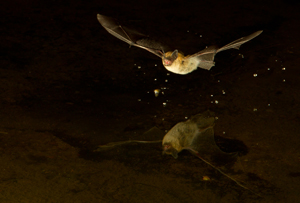 At The Pond, in the desert we did maintain our scheduled dates for our bat shooting, and on several nights we traveled down to the pond for an evening of bat photography. Bat shooting is always tough, for good shooting is dependent upon several conditions. If it is too windy bats fly erratically, or fly into the wind where most views are tail-end, rather than front-on shots. If it is too cold bats may not fly, as their insect prey will be suppressed. On our last shoot, for example, we had idealic conditions one evening, and we had forty passes, with most of those views being head on! The next evening it was so windy we didn't even bother to shoot, but the following evening the conditions were again perfect but.....
At The Pond, in the desert we did maintain our scheduled dates for our bat shooting, and on several nights we traveled down to the pond for an evening of bat photography. Bat shooting is always tough, for good shooting is dependent upon several conditions. If it is too windy bats fly erratically, or fly into the wind where most views are tail-end, rather than front-on shots. If it is too cold bats may not fly, as their insect prey will be suppressed. On our last shoot, for example, we had idealic conditions one evening, and we had forty passes, with most of those views being head on! The next evening it was so windy we didn't even bother to shoot, but the following evening the conditions were again perfect but.....
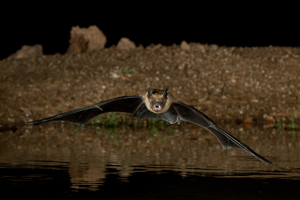
Despite those great conditions, where I'd have bet big money that we'd have one of the best shoots ever, we had only three bats at the pond in a two hour period. The next night another group used the pond and that night the shooting was even worse! But the following evening the bats were back to normal, with a very good shoot for that group. So ... you just never know.
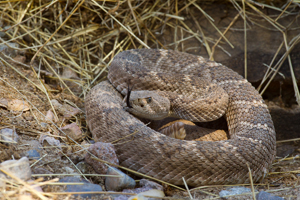 As usual, I bought an Arizona Hunting license that permits me to catch lizards or snakes that our group can then photograph. This year all of our groups photographed two Western Diamondback Rattlesnakes, and two of our groups also photographed a beautiful Black-tailed Rattlesnake and a Banded Gecko.
As usual, I bought an Arizona Hunting license that permits me to catch lizards or snakes that our group can then photograph. This year all of our groups photographed two Western Diamondback Rattlesnakes, and two of our groups also photographed a beautiful Black-tailed Rattlesnake and a Banded Gecko.
The personal highlight for me was obtaining a very poor photograph, via a Trail Game Camera, of a Mountain Lion! One day I discovered a fresh road-killed deer and I placed three game cameras around it, hoping that perhaps a mountain lion would come in to scavenge. On the third night, when the deer was very ripe, a mountain lion did, but apparently the smell was unpleasant enough that the cat didn't feed but instead just walked on by. I almost deleted the image, thinking it was just a deer, and I didn't discover that it was a mountain lion until I loaded the card on my laptop.
Ironically, one of our participants, who was having trouble having his Nikon camera fire repeated sequential shots -- the method we use for our bat shooting, decided to sit in the dark and to man his camera manually, holding a remote and triggering the shutter, on Bulb. I have a game-caller that has mountain lion vocalizations on it, and I was half-considering putting the caller in the canyon and playing the calls, just to get our friend a bit nervous. I didn't, but he enjoyed the irony when I told him that just three days earlier a mountain lion had to have passed right by where he had been sitting in the darkness. Not that that is dangerous, but it sure would make some people a bit nervous or concerned!
I had an opportunity to further explore a new camera accessory, the StopShot and Range IR which I used to photograph a Gray Fox and Raccoon. Next year, I want to include NIGHT PHOTOGRAPHY and its many manifestations as a part of this photo shoot. Some in our group also spent time photographing one of the most attractive 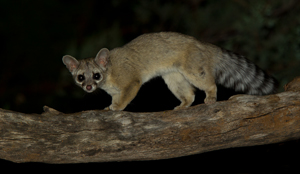 mammals of the southwest, the Ringtail or improperly known ringtailed cat. This relative of the raccoon is a nocturnal, arboreal mammal about the size of a slender cat, but with a long ringed tail that is longer than its body. On two nights the ringtail cooperated, but on the third, when several shooters tried for another round, the ringtail just didn't show, even though it had walked across the parking lot and appeared to be circling to visit our area. Again, you just never know.
mammals of the southwest, the Ringtail or improperly known ringtailed cat. This relative of the raccoon is a nocturnal, arboreal mammal about the size of a slender cat, but with a long ringed tail that is longer than its body. On two nights the ringtail cooperated, but on the third, when several shooters tried for another round, the ringtail just didn't show, even though it had walked across the parking lot and appeared to be circling to visit our area. Again, you just never know.
The shoots ended up being far more successful that we had feared, and were as diverse and interesting and productive as we've had in other years. In fact, all of these changes required us to actually change and think out of the box, which is a good thing when one is doing the same tour for twenty years.
Because of, or despite these changes, the shoot was so interesting and with the new options we decided to incorporate that we decided we simply had to return again next year for another year of bats and hummingbirds, but this year we'll also include sessions of night photography as well. We have exciting plans here, and I hope to have our new brochure posted soon. In the meantime, please consult this link (presently on our 2012 brochure) to give you a good idea of what to expect. The new brochure, for 2013, will be on this same link, once the brochure is posted!
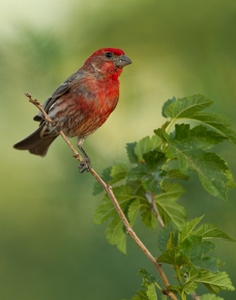
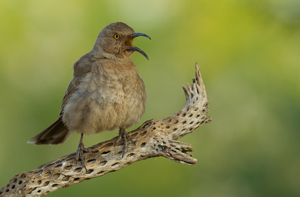
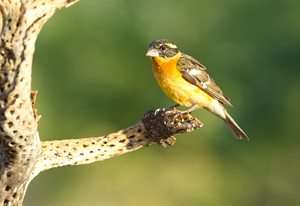
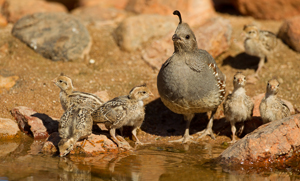
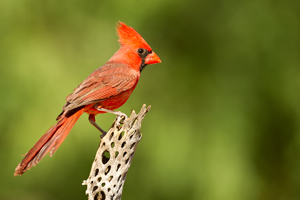
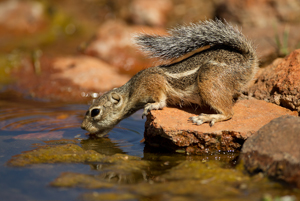
Since Christian and Peter, his father, were traveling all the way from Holland to attend this shoot, I wanted them to get the most out of their journey and we were able to schedule one day at The Pond for the two of them. It is very unfortunate our other group members did not have this opportunity, but at least these two, traveling so far, had the chance. Here's a sample of their shots, including: House Finch, Curve-billed Thrasher, Black-headed Grosbeak, Gambels Quail family, Cardinal, and Antelope Ground Squirrel.
I hope you enjoyed Christian's wonderful portfolio. I've never featured anyone's entire portfolio before in one of our trip reports but this one may mark a new trend.
There were several reasons for this. One, Mary and I were so busy that we did not have the opportunity, even once, to photograph any hummingbirds ourselves. I only shot 'test shots' to make sure the lighting was correct for the sets, and since we've been to the Museum many times each of us concentrated on specific species. I really regret I didn't follow Christian around, shooting some of the birds he got! More importantly, Christian's work was superb, but it ALSO ILLUSTRATED THAT THIS IS THE TYPE OF SHOOTING you too can enjoy on this special shoot. No one else offers this type of combination, of birds, bats, reptiles, and a paid-for trip to the Museum. The shooting opportunities are diverse, and Christian's portfolio truly shows this. THANK YOU, CHRISTIAN!
Check out our 2009 and 2010 Bat Portfolio
Read our 2009 Trip Report and 2010 Trip Report or our 2011 Trip Report for further information!
About Your Leaders
Contact our Office to REGISTER for our 2013 Hummingbird and Hummingbird and Bat Photo Shoots
Contact us by e-mail at
info@hoothollow.com
Office Phone: 717 543-6423
Or FAX us at: (717) 543-5342.
Return to HomePage or to photo tours general information.
Hummingbirds and Bats
of Southern Arizona
TRIP REPORT, 2012



Unless otherwise noted, all images in this report are from one of our participants, Christian Biemans, from Holland.
We were quite concerned, this year, about our Arizona Hummingbird and Bat Shoots. Scheduling this trips one year in advance, unexpected or unknown variables can appear, potentially influencing the outcome of a shoot or the success of the adventure.
 During the autumn of last year, the lodge that we use, the Santa Rita Lodge in Madera Canyon, renovated some of their facilities. A new gift shop was built, which took out one of our 'natural light' sets and also one of the locations where we normally position one of our hummingbird sets. A schedule glitch at another location, where we normally have participants spend one morning photographing desert birds from a blind, bumped us out of that location as well. Finally, the lodge also suggested that we break a tradition of twenty years and move our cabin to a new and bigger room, which separated us from our 'equipment and headquarters' room by the entire length of the lodge, a 150 yard separation. With all of these changes, we worried that the shoot might not be as successful as we'd normally expect.
During the autumn of last year, the lodge that we use, the Santa Rita Lodge in Madera Canyon, renovated some of their facilities. A new gift shop was built, which took out one of our 'natural light' sets and also one of the locations where we normally position one of our hummingbird sets. A schedule glitch at another location, where we normally have participants spend one morning photographing desert birds from a blind, bumped us out of that location as well. Finally, the lodge also suggested that we break a tradition of twenty years and move our cabin to a new and bigger room, which separated us from our 'equipment and headquarters' room by the entire length of the lodge, a 150 yard separation. With all of these changes, we worried that the shoot might not be as successful as we'd normally expect.
Our fears proved unneccessary, as everything worked out quite well. Although we lost our traditional 'Set Four' because of the Gift Shop we simply moved that down to the lower cabins, where Mary and I slept and where Mary cooked the lunches. This did result in Mary often supervising the two lower sets, Four and Five, while I worked with the other three sets at the upper end of the lodge.
The cabin we now lived in was like a little house, and actually provided far more room for accommodating our stuff, and Mary's cooking, and also ended up to be a comfortable location for our meetings, teaching, and portfolio presentations. Within a short time Mary had Black-headed Grosbeaks, Lesser Goldfinches, White-breasted Nuthatches, Western Gray Squirrels, and Pocket Gophers all feeding around our cabin, just as we had in previous years up at our old room.


Barrel cactus and young saguaros at the Museum, and an Anna's Hummingbird at the Desert Museum nested in the aviary, right next to the trail, affording great opportunities.
We substituted our desert bird photography location with a group trip north to Tucson and the spectacular Arizona-Sonoran Desert Museum, one of the finest facilities in the country. The museum is actually more of a zoo, with wildlife and plants, as well as numerous informative exhibits, that solely features animals and plants native to this ecological region. Some of the highlights of the museum include a great enclosure for native lizards, a large aviary where hummingbirds fly free and nest, and exhibits featuring Mountain Lions (Pumas), Bobcats, Desert Big Horn Sheep, Mexican Gray Wolves, Black-tailed Prairie Dogs, and a wonderful underwater viewing area for River Otters.
Additionally, prior to the Museum opening we took the time to teach and to do a panoramic shot of the Saguaro-studded desert that surrounds the museum.




Birds, this year, were surprisingly scarce, and birding facilities throughout the area reported either a late migration or strangely reduced numbers. As usual, we set up our own 'natural light pond' where we erect a 4x8 pond on saw-horses, allowing photographers to shoot birds at the pond from a water-level perspective, without lying on the ground. Normally birds visit this feature and the feeders surrounding it by the dozens, but this year visits were scarce and the numbers low. This was disconcerting, and very worrysome, and I hope this doesn't indicate some disasterous trend. On the positive side, towards the end of our stay birds seemed to be increasing in numbers, so perhaps the migration was just late.
Normally, as we're leaving Arizona the first 100 degree day in Tucson was still to arrive, but this year summer, or extremely hot temperatures, arrived over two weeks earlier. Accordingly, Saguaro cactuses were in bloom much earlier than usual, and the Lesser Long-nosed Bats that usually visit the hummingbird feeders, and our camera traps, did not appear, as food was now abundant in the desert where the bats fed on the desert flowers.




Our hummingbird sets, however, were as busy and active as ever, and our various groups photographed Magnificent, Broad-billed, Black-chinned, Broad-tailed, and a few Anna's Hummingbirds during the period.
A small stream runs through the canyon just behind our lodge and some years, this being a desert, the stream is bone-dry. Last year, because of an usually wet spring the stream ran like a small creek, which translated into no bats for photography as the bats could fly anywhere for a drink. Ideal conditions exist when the stream is nearly dry, with limited waterholes where the bats can drink and where we can place our camera set-ups. This year, the conditions were approaching ideal, as the stream was running low but there was still too much water in various areas to concentrate large numbers of bats at our pool. Nonetheless we did get some nice shots, although the opportunities there were limited.
 At The Pond, in the desert we did maintain our scheduled dates for our bat shooting, and on several nights we traveled down to the pond for an evening of bat photography. Bat shooting is always tough, for good shooting is dependent upon several conditions. If it is too windy bats fly erratically, or fly into the wind where most views are tail-end, rather than front-on shots. If it is too cold bats may not fly, as their insect prey will be suppressed. On our last shoot, for example, we had idealic conditions one evening, and we had forty passes, with most of those views being head on! The next evening it was so windy we didn't even bother to shoot, but the following evening the conditions were again perfect but.....
At The Pond, in the desert we did maintain our scheduled dates for our bat shooting, and on several nights we traveled down to the pond for an evening of bat photography. Bat shooting is always tough, for good shooting is dependent upon several conditions. If it is too windy bats fly erratically, or fly into the wind where most views are tail-end, rather than front-on shots. If it is too cold bats may not fly, as their insect prey will be suppressed. On our last shoot, for example, we had idealic conditions one evening, and we had forty passes, with most of those views being head on! The next evening it was so windy we didn't even bother to shoot, but the following evening the conditions were again perfect but.....

Despite those great conditions, where I'd have bet big money that we'd have one of the best shoots ever, we had only three bats at the pond in a two hour period. The next night another group used the pond and that night the shooting was even worse! But the following evening the bats were back to normal, with a very good shoot for that group. So ... you just never know.
 As usual, I bought an Arizona Hunting license that permits me to catch lizards or snakes that our group can then photograph. This year all of our groups photographed two Western Diamondback Rattlesnakes, and two of our groups also photographed a beautiful Black-tailed Rattlesnake and a Banded Gecko.
As usual, I bought an Arizona Hunting license that permits me to catch lizards or snakes that our group can then photograph. This year all of our groups photographed two Western Diamondback Rattlesnakes, and two of our groups also photographed a beautiful Black-tailed Rattlesnake and a Banded Gecko.
The personal highlight for me was obtaining a very poor photograph, via a Trail Game Camera, of a Mountain Lion! One day I discovered a fresh road-killed deer and I placed three game cameras around it, hoping that perhaps a mountain lion would come in to scavenge. On the third night, when the deer was very ripe, a mountain lion did, but apparently the smell was unpleasant enough that the cat didn't feed but instead just walked on by. I almost deleted the image, thinking it was just a deer, and I didn't discover that it was a mountain lion until I loaded the card on my laptop.
Ironically, one of our participants, who was having trouble having his Nikon camera fire repeated sequential shots -- the method we use for our bat shooting, decided to sit in the dark and to man his camera manually, holding a remote and triggering the shutter, on Bulb. I have a game-caller that has mountain lion vocalizations on it, and I was half-considering putting the caller in the canyon and playing the calls, just to get our friend a bit nervous. I didn't, but he enjoyed the irony when I told him that just three days earlier a mountain lion had to have passed right by where he had been sitting in the darkness. Not that that is dangerous, but it sure would make some people a bit nervous or concerned!
I had an opportunity to further explore a new camera accessory, the StopShot and Range IR which I used to photograph a Gray Fox and Raccoon. Next year, I want to include NIGHT PHOTOGRAPHY and its many manifestations as a part of this photo shoot. Some in our group also spent time photographing one of the most attractive  mammals of the southwest, the Ringtail or improperly known ringtailed cat. This relative of the raccoon is a nocturnal, arboreal mammal about the size of a slender cat, but with a long ringed tail that is longer than its body. On two nights the ringtail cooperated, but on the third, when several shooters tried for another round, the ringtail just didn't show, even though it had walked across the parking lot and appeared to be circling to visit our area. Again, you just never know.
mammals of the southwest, the Ringtail or improperly known ringtailed cat. This relative of the raccoon is a nocturnal, arboreal mammal about the size of a slender cat, but with a long ringed tail that is longer than its body. On two nights the ringtail cooperated, but on the third, when several shooters tried for another round, the ringtail just didn't show, even though it had walked across the parking lot and appeared to be circling to visit our area. Again, you just never know.
The shoots ended up being far more successful that we had feared, and were as diverse and interesting and productive as we've had in other years. In fact, all of these changes required us to actually change and think out of the box, which is a good thing when one is doing the same tour for twenty years.
Because of, or despite these changes, the shoot was so interesting and with the new options we decided to incorporate that we decided we simply had to return again next year for another year of bats and hummingbirds, but this year we'll also include sessions of night photography as well. We have exciting plans here, and I hope to have our new brochure posted soon. In the meantime, please consult this link (presently on our 2012 brochure) to give you a good idea of what to expect. The new brochure, for 2013, will be on this same link, once the brochure is posted!






Since Christian and Peter, his father, were traveling all the way from Holland to attend this shoot, I wanted them to get the most out of their journey and we were able to schedule one day at The Pond for the two of them. It is very unfortunate our other group members did not have this opportunity, but at least these two, traveling so far, had the chance. Here's a sample of their shots, including: House Finch, Curve-billed Thrasher, Black-headed Grosbeak, Gambels Quail family, Cardinal, and Antelope Ground Squirrel.
I hope you enjoyed Christian's wonderful portfolio. I've never featured anyone's entire portfolio before in one of our trip reports but this one may mark a new trend.
There were several reasons for this. One, Mary and I were so busy that we did not have the opportunity, even once, to photograph any hummingbirds ourselves. I only shot 'test shots' to make sure the lighting was correct for the sets, and since we've been to the Museum many times each of us concentrated on specific species. I really regret I didn't follow Christian around, shooting some of the birds he got! More importantly, Christian's work was superb, but it ALSO ILLUSTRATED THAT THIS IS THE TYPE OF SHOOTING you too can enjoy on this special shoot. No one else offers this type of combination, of birds, bats, reptiles, and a paid-for trip to the Museum. The shooting opportunities are diverse, and Christian's portfolio truly shows this. THANK YOU, CHRISTIAN!
Check out our 2009 and 2010 Bat Portfolio
Read our 2009 Trip Report and 2010 Trip Report or our 2011 Trip Report for further information!
About Your Leaders
Contact our Office to REGISTER for our 2013 Hummingbird and Hummingbird and Bat Photo Shoots
Contact us by e-mail at
info@hoothollow.com
Office Phone: 717 543-6423
Or FAX us at: (717) 543-5342.
Return to HomePage or to photo tours general information.
Hummingbirds and Bats
of Southern Arizona
TRIP REPORT, 2012



Unless otherwise noted, all images in this report are from one of our participants, Christian Biemans, from Holland.
We were quite concerned, this year, about our Arizona Hummingbird and Bat Shoots. Scheduling this trips one year in advance, unexpected or unknown variables can appear, potentially influencing the outcome of a shoot or the success of the adventure.
 During the autumn of last year, the lodge that we use, the Santa Rita Lodge in Madera Canyon, renovated some of their facilities. A new gift shop was built, which took out one of our 'natural light' sets and also one of the locations where we normally position one of our hummingbird sets. A schedule glitch at another location, where we normally have participants spend one morning photographing desert birds from a blind, bumped us out of that location as well. Finally, the lodge also suggested that we break a tradition of twenty years and move our cabin to a new and bigger room, which separated us from our 'equipment and headquarters' room by the entire length of the lodge, a 150 yard separation. With all of these changes, we worried that the shoot might not be as successful as we'd normally expect.
During the autumn of last year, the lodge that we use, the Santa Rita Lodge in Madera Canyon, renovated some of their facilities. A new gift shop was built, which took out one of our 'natural light' sets and also one of the locations where we normally position one of our hummingbird sets. A schedule glitch at another location, where we normally have participants spend one morning photographing desert birds from a blind, bumped us out of that location as well. Finally, the lodge also suggested that we break a tradition of twenty years and move our cabin to a new and bigger room, which separated us from our 'equipment and headquarters' room by the entire length of the lodge, a 150 yard separation. With all of these changes, we worried that the shoot might not be as successful as we'd normally expect.
Our fears proved unneccessary, as everything worked out quite well. Although we lost our traditional 'Set Four' because of the Gift Shop we simply moved that down to the lower cabins, where Mary and I slept and where Mary cooked the lunches. This did result in Mary often supervising the two lower sets, Four and Five, while I worked with the other three sets at the upper end of the lodge.
The cabin we now lived in was like a little house, and actually provided far more room for accommodating our stuff, and Mary's cooking, and also ended up to be a comfortable location for our meetings, teaching, and portfolio presentations. Within a short time Mary had Black-headed Grosbeaks, Lesser Goldfinches, White-breasted Nuthatches, Western Gray Squirrels, and Pocket Gophers all feeding around our cabin, just as we had in previous years up at our old room.


Barrel cactus and young saguaros at the Museum, and an Anna's Hummingbird at the Desert Museum nested in the aviary, right next to the trail, affording great opportunities.
We substituted our desert bird photography location with a group trip north to Tucson and the spectacular Arizona-Sonoran Desert Museum, one of the finest facilities in the country. The museum is actually more of a zoo, with wildlife and plants, as well as numerous informative exhibits, that solely features animals and plants native to this ecological region. Some of the highlights of the museum include a great enclosure for native lizards, a large aviary where hummingbirds fly free and nest, and exhibits featuring Mountain Lions (Pumas), Bobcats, Desert Big Horn Sheep, Mexican Gray Wolves, Black-tailed Prairie Dogs, and a wonderful underwater viewing area for River Otters.
Additionally, prior to the Museum opening we took the time to teach and to do a panoramic shot of the Saguaro-studded desert that surrounds the museum.




Birds, this year, were surprisingly scarce, and birding facilities throughout the area reported either a late migration or strangely reduced numbers. As usual, we set up our own 'natural light pond' where we erect a 4x8 pond on saw-horses, allowing photographers to shoot birds at the pond from a water-level perspective, without lying on the ground. Normally birds visit this feature and the feeders surrounding it by the dozens, but this year visits were scarce and the numbers low. This was disconcerting, and very worrysome, and I hope this doesn't indicate some disasterous trend. On the positive side, towards the end of our stay birds seemed to be increasing in numbers, so perhaps the migration was just late.
Normally, as we're leaving Arizona the first 100 degree day in Tucson was still to arrive, but this year summer, or extremely hot temperatures, arrived over two weeks earlier. Accordingly, Saguaro cactuses were in bloom much earlier than usual, and the Lesser Long-nosed Bats that usually visit the hummingbird feeders, and our camera traps, did not appear, as food was now abundant in the desert where the bats fed on the desert flowers.




Our hummingbird sets, however, were as busy and active as ever, and our various groups photographed Magnificent, Broad-billed, Black-chinned, Broad-tailed, and a few Anna's Hummingbirds during the period.
A small stream runs through the canyon just behind our lodge and some years, this being a desert, the stream is bone-dry. Last year, because of an usually wet spring the stream ran like a small creek, which translated into no bats for photography as the bats could fly anywhere for a drink. Ideal conditions exist when the stream is nearly dry, with limited waterholes where the bats can drink and where we can place our camera set-ups. This year, the conditions were approaching ideal, as the stream was running low but there was still too much water in various areas to concentrate large numbers of bats at our pool. Nonetheless we did get some nice shots, although the opportunities there were limited.
 At The Pond, in the desert we did maintain our scheduled dates for our bat shooting, and on several nights we traveled down to the pond for an evening of bat photography. Bat shooting is always tough, for good shooting is dependent upon several conditions. If it is too windy bats fly erratically, or fly into the wind where most views are tail-end, rather than front-on shots. If it is too cold bats may not fly, as their insect prey will be suppressed. On our last shoot, for example, we had idealic conditions one evening, and we had forty passes, with most of those views being head on! The next evening it was so windy we didn't even bother to shoot, but the following evening the conditions were again perfect but.....
At The Pond, in the desert we did maintain our scheduled dates for our bat shooting, and on several nights we traveled down to the pond for an evening of bat photography. Bat shooting is always tough, for good shooting is dependent upon several conditions. If it is too windy bats fly erratically, or fly into the wind where most views are tail-end, rather than front-on shots. If it is too cold bats may not fly, as their insect prey will be suppressed. On our last shoot, for example, we had idealic conditions one evening, and we had forty passes, with most of those views being head on! The next evening it was so windy we didn't even bother to shoot, but the following evening the conditions were again perfect but.....

Despite those great conditions, where I'd have bet big money that we'd have one of the best shoots ever, we had only three bats at the pond in a two hour period. The next night another group used the pond and that night the shooting was even worse! But the following evening the bats were back to normal, with a very good shoot for that group. So ... you just never know.
 As usual, I bought an Arizona Hunting license that permits me to catch lizards or snakes that our group can then photograph. This year all of our groups photographed two Western Diamondback Rattlesnakes, and two of our groups also photographed a beautiful Black-tailed Rattlesnake and a Banded Gecko.
As usual, I bought an Arizona Hunting license that permits me to catch lizards or snakes that our group can then photograph. This year all of our groups photographed two Western Diamondback Rattlesnakes, and two of our groups also photographed a beautiful Black-tailed Rattlesnake and a Banded Gecko.
The personal highlight for me was obtaining a very poor photograph, via a Trail Game Camera, of a Mountain Lion! One day I discovered a fresh road-killed deer and I placed three game cameras around it, hoping that perhaps a mountain lion would come in to scavenge. On the third night, when the deer was very ripe, a mountain lion did, but apparently the smell was unpleasant enough that the cat didn't feed but instead just walked on by. I almost deleted the image, thinking it was just a deer, and I didn't discover that it was a mountain lion until I loaded the card on my laptop.
Ironically, one of our participants, who was having trouble having his Nikon camera fire repeated sequential shots -- the method we use for our bat shooting, decided to sit in the dark and to man his camera manually, holding a remote and triggering the shutter, on Bulb. I have a game-caller that has mountain lion vocalizations on it, and I was half-considering putting the caller in the canyon and playing the calls, just to get our friend a bit nervous. I didn't, but he enjoyed the irony when I told him that just three days earlier a mountain lion had to have passed right by where he had been sitting in the darkness. Not that that is dangerous, but it sure would make some people a bit nervous or concerned!
I had an opportunity to further explore a new camera accessory, the StopShot and Range IR which I used to photograph a Gray Fox and Raccoon. Next year, I want to include NIGHT PHOTOGRAPHY and its many manifestations as a part of this photo shoot. Some in our group also spent time photographing one of the most attractive  mammals of the southwest, the Ringtail or improperly known ringtailed cat. This relative of the raccoon is a nocturnal, arboreal mammal about the size of a slender cat, but with a long ringed tail that is longer than its body. On two nights the ringtail cooperated, but on the third, when several shooters tried for another round, the ringtail just didn't show, even though it had walked across the parking lot and appeared to be circling to visit our area. Again, you just never know.
mammals of the southwest, the Ringtail or improperly known ringtailed cat. This relative of the raccoon is a nocturnal, arboreal mammal about the size of a slender cat, but with a long ringed tail that is longer than its body. On two nights the ringtail cooperated, but on the third, when several shooters tried for another round, the ringtail just didn't show, even though it had walked across the parking lot and appeared to be circling to visit our area. Again, you just never know.
The shoots ended up being far more successful that we had feared, and were as diverse and interesting and productive as we've had in other years. In fact, all of these changes required us to actually change and think out of the box, which is a good thing when one is doing the same tour for twenty years.
Because of, or despite these changes, the shoot was so interesting and with the new options we decided to incorporate that we decided we simply had to return again next year for another year of bats and hummingbirds, but this year we'll also include sessions of night photography as well. We have exciting plans here, and I hope to have our new brochure posted soon. In the meantime, please consult this link (presently on our 2012 brochure) to give you a good idea of what to expect. The new brochure, for 2013, will be on this same link, once the brochure is posted!






Since Christian and Peter, his father, were traveling all the way from Holland to attend this shoot, I wanted them to get the most out of their journey and we were able to schedule one day at The Pond for the two of them. It is very unfortunate our other group members did not have this opportunity, but at least these two, traveling so far, had the chance. Here's a sample of their shots, including: House Finch, Curve-billed Thrasher, Black-headed Grosbeak, Gambels Quail family, Cardinal, and Antelope Ground Squirrel.
I hope you enjoyed Christian's wonderful portfolio. I've never featured anyone's entire portfolio before in one of our trip reports but this one may mark a new trend.
There were several reasons for this. One, Mary and I were so busy that we did not have the opportunity, even once, to photograph any hummingbirds ourselves. I only shot 'test shots' to make sure the lighting was correct for the sets, and since we've been to the Museum many times each of us concentrated on specific species. I really regret I didn't follow Christian around, shooting some of the birds he got! More importantly, Christian's work was superb, but it ALSO ILLUSTRATED THAT THIS IS THE TYPE OF SHOOTING you too can enjoy on this special shoot. No one else offers this type of combination, of birds, bats, reptiles, and a paid-for trip to the Museum. The shooting opportunities are diverse, and Christian's portfolio truly shows this. THANK YOU, CHRISTIAN!
Check out our 2009 and 2010 Bat Portfolio
Read our 2009 Trip Report and 2010 Trip Report or our 2011 Trip Report for further information!
About Your Leaders
Contact our Office to REGISTER for our 2013 Hummingbird and Hummingbird and Bat Photo Shoots
Contact us by e-mail at
info@hoothollow.com
Office Phone: 717 543-6423
Or FAX us at: (717) 543-5342.
Return to HomePage or to photo tours general information.
Hummingbirds and Bats
of Southern Arizona
TRIP REPORT, 2012



Unless otherwise noted, all images in this report are from one of our participants, Christian Biemans, from Holland.
We were quite concerned, this year, about our Arizona Hummingbird and Bat Shoots. Scheduling this trips one year in advance, unexpected or unknown variables can appear, potentially influencing the outcome of a shoot or the success of the adventure.
 During the autumn of last year, the lodge that we use, the Santa Rita Lodge in Madera Canyon, renovated some of their facilities. A new gift shop was built, which took out one of our 'natural light' sets and also one of the locations where we normally position one of our hummingbird sets. A schedule glitch at another location, where we normally have participants spend one morning photographing desert birds from a blind, bumped us out of that location as well. Finally, the lodge also suggested that we break a tradition of twenty years and move our cabin to a new and bigger room, which separated us from our 'equipment and headquarters' room by the entire length of the lodge, a 150 yard separation. With all of these changes, we worried that the shoot might not be as successful as we'd normally expect.
During the autumn of last year, the lodge that we use, the Santa Rita Lodge in Madera Canyon, renovated some of their facilities. A new gift shop was built, which took out one of our 'natural light' sets and also one of the locations where we normally position one of our hummingbird sets. A schedule glitch at another location, where we normally have participants spend one morning photographing desert birds from a blind, bumped us out of that location as well. Finally, the lodge also suggested that we break a tradition of twenty years and move our cabin to a new and bigger room, which separated us from our 'equipment and headquarters' room by the entire length of the lodge, a 150 yard separation. With all of these changes, we worried that the shoot might not be as successful as we'd normally expect.
Our fears proved unneccessary, as everything worked out quite well. Although we lost our traditional 'Set Four' because of the Gift Shop we simply moved that down to the lower cabins, where Mary and I slept and where Mary cooked the lunches. This did result in Mary often supervising the two lower sets, Four and Five, while I worked with the other three sets at the upper end of the lodge.
The cabin we now lived in was like a little house, and actually provided far more room for accommodating our stuff, and Mary's cooking, and also ended up to be a comfortable location for our meetings, teaching, and portfolio presentations. Within a short time Mary had Black-headed Grosbeaks, Lesser Goldfinches, White-breasted Nuthatches, Western Gray Squirrels, and Pocket Gophers all feeding around our cabin, just as we had in previous years up at our old room.


Barrel cactus and young saguaros at the Museum, and an Anna's Hummingbird at the Desert Museum nested in the aviary, right next to the trail, affording great opportunities.
We substituted our desert bird photography location with a group trip north to Tucson and the spectacular Arizona-Sonoran Desert Museum, one of the finest facilities in the country. The museum is actually more of a zoo, with wildlife and plants, as well as numerous informative exhibits, that solely features animals and plants native to this ecological region. Some of the highlights of the museum include a great enclosure for native lizards, a large aviary where hummingbirds fly free and nest, and exhibits featuring Mountain Lions (Pumas), Bobcats, Desert Big Horn Sheep, Mexican Gray Wolves, Black-tailed Prairie Dogs, and a wonderful underwater viewing area for River Otters.
Additionally, prior to the Museum opening we took the time to teach and to do a panoramic shot of the Saguaro-studded desert that surrounds the museum.




Birds, this year, were surprisingly scarce, and birding facilities throughout the area reported either a late migration or strangely reduced numbers. As usual, we set up our own 'natural light pond' where we erect a 4x8 pond on saw-horses, allowing photographers to shoot birds at the pond from a water-level perspective, without lying on the ground. Normally birds visit this feature and the feeders surrounding it by the dozens, but this year visits were scarce and the numbers low. This was disconcerting, and very worrysome, and I hope this doesn't indicate some disasterous trend. On the positive side, towards the end of our stay birds seemed to be increasing in numbers, so perhaps the migration was just late.
Normally, as we're leaving Arizona the first 100 degree day in Tucson was still to arrive, but this year summer, or extremely hot temperatures, arrived over two weeks earlier. Accordingly, Saguaro cactuses were in bloom much earlier than usual, and the Lesser Long-nosed Bats that usually visit the hummingbird feeders, and our camera traps, did not appear, as food was now abundant in the desert where the bats fed on the desert flowers.




Our hummingbird sets, however, were as busy and active as ever, and our various groups photographed Magnificent, Broad-billed, Black-chinned, Broad-tailed, and a few Anna's Hummingbirds during the period.
A small stream runs through the canyon just behind our lodge and some years, this being a desert, the stream is bone-dry. Last year, because of an usually wet spring the stream ran like a small creek, which translated into no bats for photography as the bats could fly anywhere for a drink. Ideal conditions exist when the stream is nearly dry, with limited waterholes where the bats can drink and where we can place our camera set-ups. This year, the conditions were approaching ideal, as the stream was running low but there was still too much water in various areas to concentrate large numbers of bats at our pool. Nonetheless we did get some nice shots, although the opportunities there were limited.
 At The Pond, in the desert we did maintain our scheduled dates for our bat shooting, and on several nights we traveled down to the pond for an evening of bat photography. Bat shooting is always tough, for good shooting is dependent upon several conditions. If it is too windy bats fly erratically, or fly into the wind where most views are tail-end, rather than front-on shots. If it is too cold bats may not fly, as their insect prey will be suppressed. On our last shoot, for example, we had idealic conditions one evening, and we had forty passes, with most of those views being head on! The next evening it was so windy we didn't even bother to shoot, but the following evening the conditions were again perfect but.....
At The Pond, in the desert we did maintain our scheduled dates for our bat shooting, and on several nights we traveled down to the pond for an evening of bat photography. Bat shooting is always tough, for good shooting is dependent upon several conditions. If it is too windy bats fly erratically, or fly into the wind where most views are tail-end, rather than front-on shots. If it is too cold bats may not fly, as their insect prey will be suppressed. On our last shoot, for example, we had idealic conditions one evening, and we had forty passes, with most of those views being head on! The next evening it was so windy we didn't even bother to shoot, but the following evening the conditions were again perfect but.....

Despite those great conditions, where I'd have bet big money that we'd have one of the best shoots ever, we had only three bats at the pond in a two hour period. The next night another group used the pond and that night the shooting was even worse! But the following evening the bats were back to normal, with a very good shoot for that group. So ... you just never know.
 As usual, I bought an Arizona Hunting license that permits me to catch lizards or snakes that our group can then photograph. This year all of our groups photographed two Western Diamondback Rattlesnakes, and two of our groups also photographed a beautiful Black-tailed Rattlesnake and a Banded Gecko.
As usual, I bought an Arizona Hunting license that permits me to catch lizards or snakes that our group can then photograph. This year all of our groups photographed two Western Diamondback Rattlesnakes, and two of our groups also photographed a beautiful Black-tailed Rattlesnake and a Banded Gecko.
The personal highlight for me was obtaining a very poor photograph, via a Trail Game Camera, of a Mountain Lion! One day I discovered a fresh road-killed deer and I placed three game cameras around it, hoping that perhaps a mountain lion would come in to scavenge. On the third night, when the deer was very ripe, a mountain lion did, but apparently the smell was unpleasant enough that the cat didn't feed but instead just walked on by. I almost deleted the image, thinking it was just a deer, and I didn't discover that it was a mountain lion until I loaded the card on my laptop.
Ironically, one of our participants, who was having trouble having his Nikon camera fire repeated sequential shots -- the method we use for our bat shooting, decided to sit in the dark and to man his camera manually, holding a remote and triggering the shutter, on Bulb. I have a game-caller that has mountain lion vocalizations on it, and I was half-considering putting the caller in the canyon and playing the calls, just to get our friend a bit nervous. I didn't, but he enjoyed the irony when I told him that just three days earlier a mountain lion had to have passed right by where he had been sitting in the darkness. Not that that is dangerous, but it sure would make some people a bit nervous or concerned!
I had an opportunity to further explore a new camera accessory, the StopShot and Range IR which I used to photograph a Gray Fox and Raccoon. Next year, I want to include NIGHT PHOTOGRAPHY and its many manifestations as a part of this photo shoot. Some in our group also spent time photographing one of the most attractive  mammals of the southwest, the Ringtail or improperly known ringtailed cat. This relative of the raccoon is a nocturnal, arboreal mammal about the size of a slender cat, but with a long ringed tail that is longer than its body. On two nights the ringtail cooperated, but on the third, when several shooters tried for another round, the ringtail just didn't show, even though it had walked across the parking lot and appeared to be circling to visit our area. Again, you just never know.
mammals of the southwest, the Ringtail or improperly known ringtailed cat. This relative of the raccoon is a nocturnal, arboreal mammal about the size of a slender cat, but with a long ringed tail that is longer than its body. On two nights the ringtail cooperated, but on the third, when several shooters tried for another round, the ringtail just didn't show, even though it had walked across the parking lot and appeared to be circling to visit our area. Again, you just never know.
The shoots ended up being far more successful that we had feared, and were as diverse and interesting and productive as we've had in other years. In fact, all of these changes required us to actually change and think out of the box, which is a good thing when one is doing the same tour for twenty years.
Because of, or despite these changes, the shoot was so interesting and with the new options we decided to incorporate that we decided we simply had to return again next year for another year of bats and hummingbirds, but this year we'll also include sessions of night photography as well. We have exciting plans here, and I hope to have our new brochure posted soon. In the meantime, please consult this link (presently on our 2012 brochure) to give you a good idea of what to expect. The new brochure, for 2013, will be on this same link, once the brochure is posted!






Since Christian and Peter, his father, were traveling all the way from Holland to attend this shoot, I wanted them to get the most out of their journey and we were able to schedule one day at The Pond for the two of them. It is very unfortunate our other group members did not have this opportunity, but at least these two, traveling so far, had the chance. Here's a sample of their shots, including: House Finch, Curve-billed Thrasher, Black-headed Grosbeak, Gambels Quail family, Cardinal, and Antelope Ground Squirrel.
I hope you enjoyed Christian's wonderful portfolio. I've never featured anyone's entire portfolio before in one of our trip reports but this one may mark a new trend.
There were several reasons for this. One, Mary and I were so busy that we did not have the opportunity, even once, to photograph any hummingbirds ourselves. I only shot 'test shots' to make sure the lighting was correct for the sets, and since we've been to the Museum many times each of us concentrated on specific species. I really regret I didn't follow Christian around, shooting some of the birds he got! More importantly, Christian's work was superb, but it ALSO ILLUSTRATED THAT THIS IS THE TYPE OF SHOOTING you too can enjoy on this special shoot. No one else offers this type of combination, of birds, bats, reptiles, and a paid-for trip to the Museum. The shooting opportunities are diverse, and Christian's portfolio truly shows this. THANK YOU, CHRISTIAN!
Check out our 2009 and 2010 Bat Portfolio
Read our 2009 Trip Report and 2010 Trip Report or our 2011 Trip Report for further information!
About Your Leaders
Contact our Office to REGISTER for our 2013 Hummingbird and Hummingbird and Bat Photo Shoots
Contact us by e-mail at
info@hoothollow.com
Office Phone: 717 543-6423
Or FAX us at: (717) 543-5342.
Return to HomePage or to photo tours general information.
Hummingbirds and Bats
of Southern Arizona
TRIP REPORT, 2012



Unless otherwise noted, all images in this report are from one of our participants, Christian Biemans, from Holland.
We were quite concerned, this year, about our Arizona Hummingbird and Bat Shoots. Scheduling this trips one year in advance, unexpected or unknown variables can appear, potentially influencing the outcome of a shoot or the success of the adventure.
 During the autumn of last year, the lodge that we use, the Santa Rita Lodge in Madera Canyon, renovated some of their facilities. A new gift shop was built, which took out one of our 'natural light' sets and also one of the locations where we normally position one of our hummingbird sets. A schedule glitch at another location, where we normally have participants spend one morning photographing desert birds from a blind, bumped us out of that location as well. Finally, the lodge also suggested that we break a tradition of twenty years and move our cabin to a new and bigger room, which separated us from our 'equipment and headquarters' room by the entire length of the lodge, a 150 yard separation. With all of these changes, we worried that the shoot might not be as successful as we'd normally expect.
During the autumn of last year, the lodge that we use, the Santa Rita Lodge in Madera Canyon, renovated some of their facilities. A new gift shop was built, which took out one of our 'natural light' sets and also one of the locations where we normally position one of our hummingbird sets. A schedule glitch at another location, where we normally have participants spend one morning photographing desert birds from a blind, bumped us out of that location as well. Finally, the lodge also suggested that we break a tradition of twenty years and move our cabin to a new and bigger room, which separated us from our 'equipment and headquarters' room by the entire length of the lodge, a 150 yard separation. With all of these changes, we worried that the shoot might not be as successful as we'd normally expect.
Our fears proved unneccessary, as everything worked out quite well. Although we lost our traditional 'Set Four' because of the Gift Shop we simply moved that down to the lower cabins, where Mary and I slept and where Mary cooked the lunches. This did result in Mary often supervising the two lower sets, Four and Five, while I worked with the other three sets at the upper end of the lodge.
The cabin we now lived in was like a little house, and actually provided far more room for accommodating our stuff, and Mary's cooking, and also ended up to be a comfortable location for our meetings, teaching, and portfolio presentations. Within a short time Mary had Black-headed Grosbeaks, Lesser Goldfinches, White-breasted Nuthatches, Western Gray Squirrels, and Pocket Gophers all feeding around our cabin, just as we had in previous years up at our old room.


Barrel cactus and young saguaros at the Museum, and an Anna's Hummingbird at the Desert Museum nested in the aviary, right next to the trail, affording great opportunities.
We substituted our desert bird photography location with a group trip north to Tucson and the spectacular Arizona-Sonoran Desert Museum, one of the finest facilities in the country. The museum is actually more of a zoo, with wildlife and plants, as well as numerous informative exhibits, that solely features animals and plants native to this ecological region. Some of the highlights of the museum include a great enclosure for native lizards, a large aviary where hummingbirds fly free and nest, and exhibits featuring Mountain Lions (Pumas), Bobcats, Desert Big Horn Sheep, Mexican Gray Wolves, Black-tailed Prairie Dogs, and a wonderful underwater viewing area for River Otters.
Additionally, prior to the Museum opening we took the time to teach and to do a panoramic shot of the Saguaro-studded desert that surrounds the museum.




Birds, this year, were surprisingly scarce, and birding facilities throughout the area reported either a late migration or strangely reduced numbers. As usual, we set up our own 'natural light pond' where we erect a 4x8 pond on saw-horses, allowing photographers to shoot birds at the pond from a water-level perspective, without lying on the ground. Normally birds visit this feature and the feeders surrounding it by the dozens, but this year visits were scarce and the numbers low. This was disconcerting, and very worrysome, and I hope this doesn't indicate some disasterous trend. On the positive side, towards the end of our stay birds seemed to be increasing in numbers, so perhaps the migration was just late.
Normally, as we're leaving Arizona the first 100 degree day in Tucson was still to arrive, but this year summer, or extremely hot temperatures, arrived over two weeks earlier. Accordingly, Saguaro cactuses were in bloom much earlier than usual, and the Lesser Long-nosed Bats that usually visit the hummingbird feeders, and our camera traps, did not appear, as food was now abundant in the desert where the bats fed on the desert flowers.




Our hummingbird sets, however, were as busy and active as ever, and our various groups photographed Magnificent, Broad-billed, Black-chinned, Broad-tailed, and a few Anna's Hummingbirds during the period.
A small stream runs through the canyon just behind our lodge and some years, this being a desert, the stream is bone-dry. Last year, because of an usually wet spring the stream ran like a small creek, which translated into no bats for photography as the bats could fly anywhere for a drink. Ideal conditions exist when the stream is nearly dry, with limited waterholes where the bats can drink and where we can place our camera set-ups. This year, the conditions were approaching ideal, as the stream was running low but there was still too much water in various areas to concentrate large numbers of bats at our pool. Nonetheless we did get some nice shots, although the opportunities there were limited.
 At The Pond, in the desert we did maintain our scheduled dates for our bat shooting, and on several nights we traveled down to the pond for an evening of bat photography. Bat shooting is always tough, for good shooting is dependent upon several conditions. If it is too windy bats fly erratically, or fly into the wind where most views are tail-end, rather than front-on shots. If it is too cold bats may not fly, as their insect prey will be suppressed. On our last shoot, for example, we had idealic conditions one evening, and we had forty passes, with most of those views being head on! The next evening it was so windy we didn't even bother to shoot, but the following evening the conditions were again perfect but.....
At The Pond, in the desert we did maintain our scheduled dates for our bat shooting, and on several nights we traveled down to the pond for an evening of bat photography. Bat shooting is always tough, for good shooting is dependent upon several conditions. If it is too windy bats fly erratically, or fly into the wind where most views are tail-end, rather than front-on shots. If it is too cold bats may not fly, as their insect prey will be suppressed. On our last shoot, for example, we had idealic conditions one evening, and we had forty passes, with most of those views being head on! The next evening it was so windy we didn't even bother to shoot, but the following evening the conditions were again perfect but.....

Despite those great conditions, where I'd have bet big money that we'd have one of the best shoots ever, we had only three bats at the pond in a two hour period. The next night another group used the pond and that night the shooting was even worse! But the following evening the bats were back to normal, with a very good shoot for that group. So ... you just never know.
 As usual, I bought an Arizona Hunting license that permits me to catch lizards or snakes that our group can then photograph. This year all of our groups photographed two Western Diamondback Rattlesnakes, and two of our groups also photographed a beautiful Black-tailed Rattlesnake and a Banded Gecko.
As usual, I bought an Arizona Hunting license that permits me to catch lizards or snakes that our group can then photograph. This year all of our groups photographed two Western Diamondback Rattlesnakes, and two of our groups also photographed a beautiful Black-tailed Rattlesnake and a Banded Gecko.
The personal highlight for me was obtaining a very poor photograph, via a Trail Game Camera, of a Mountain Lion! One day I discovered a fresh road-killed deer and I placed three game cameras around it, hoping that perhaps a mountain lion would come in to scavenge. On the third night, when the deer was very ripe, a mountain lion did, but apparently the smell was unpleasant enough that the cat didn't feed but instead just walked on by. I almost deleted the image, thinking it was just a deer, and I didn't discover that it was a mountain lion until I loaded the card on my laptop.
Ironically, one of our participants, who was having trouble having his Nikon camera fire repeated sequential shots -- the method we use for our bat shooting, decided to sit in the dark and to man his camera manually, holding a remote and triggering the shutter, on Bulb. I have a game-caller that has mountain lion vocalizations on it, and I was half-considering putting the caller in the canyon and playing the calls, just to get our friend a bit nervous. I didn't, but he enjoyed the irony when I told him that just three days earlier a mountain lion had to have passed right by where he had been sitting in the darkness. Not that that is dangerous, but it sure would make some people a bit nervous or concerned!
I had an opportunity to further explore a new camera accessory, the StopShot and Range IR which I used to photograph a Gray Fox and Raccoon. Next year, I want to include NIGHT PHOTOGRAPHY and its many manifestations as a part of this photo shoot. Some in our group also spent time photographing one of the most attractive  mammals of the southwest, the Ringtail or improperly known ringtailed cat. This relative of the raccoon is a nocturnal, arboreal mammal about the size of a slender cat, but with a long ringed tail that is longer than its body. On two nights the ringtail cooperated, but on the third, when several shooters tried for another round, the ringtail just didn't show, even though it had walked across the parking lot and appeared to be circling to visit our area. Again, you just never know.
mammals of the southwest, the Ringtail or improperly known ringtailed cat. This relative of the raccoon is a nocturnal, arboreal mammal about the size of a slender cat, but with a long ringed tail that is longer than its body. On two nights the ringtail cooperated, but on the third, when several shooters tried for another round, the ringtail just didn't show, even though it had walked across the parking lot and appeared to be circling to visit our area. Again, you just never know.
The shoots ended up being far more successful that we had feared, and were as diverse and interesting and productive as we've had in other years. In fact, all of these changes required us to actually change and think out of the box, which is a good thing when one is doing the same tour for twenty years.
Because of, or despite these changes, the shoot was so interesting and with the new options we decided to incorporate that we decided we simply had to return again next year for another year of bats and hummingbirds, but this year we'll also include sessions of night photography as well. We have exciting plans here, and I hope to have our new brochure posted soon. In the meantime, please consult this link (presently on our 2012 brochure) to give you a good idea of what to expect. The new brochure, for 2013, will be on this same link, once the brochure is posted!






Since Christian and Peter, his father, were traveling all the way from Holland to attend this shoot, I wanted them to get the most out of their journey and we were able to schedule one day at The Pond for the two of them. It is very unfortunate our other group members did not have this opportunity, but at least these two, traveling so far, had the chance. Here's a sample of their shots, including: House Finch, Curve-billed Thrasher, Black-headed Grosbeak, Gambels Quail family, Cardinal, and Antelope Ground Squirrel.
I hope you enjoyed Christian's wonderful portfolio. I've never featured anyone's entire portfolio before in one of our trip reports but this one may mark a new trend.
There were several reasons for this. One, Mary and I were so busy that we did not have the opportunity, even once, to photograph any hummingbirds ourselves. I only shot 'test shots' to make sure the lighting was correct for the sets, and since we've been to the Museum many times each of us concentrated on specific species. I really regret I didn't follow Christian around, shooting some of the birds he got! More importantly, Christian's work was superb, but it ALSO ILLUSTRATED THAT THIS IS THE TYPE OF SHOOTING you too can enjoy on this special shoot. No one else offers this type of combination, of birds, bats, reptiles, and a paid-for trip to the Museum. The shooting opportunities are diverse, and Christian's portfolio truly shows this. THANK YOU, CHRISTIAN!
Check out our 2009 and 2010 Bat Portfolio
Read our 2009 Trip Report and 2010 Trip Report or our 2011 Trip Report for further information!
Hummingbirds and Bats
of Southern Arizona
TRIP REPORT, 2012



Unless otherwise noted, all images in this report are from one of our participants, Christian Biemans, from Holland.
We were quite concerned, this year, about our Arizona Hummingbird and Bat Shoots. Scheduling this trips one year in advance, unexpected or unknown variables can appear, potentially influencing the outcome of a shoot or the success of the adventure.
 During the autumn of last year, the lodge that we use, the Santa Rita Lodge in Madera Canyon, renovated some of their facilities. A new gift shop was built, which took out one of our 'natural light' sets and also one of the locations where we normally position one of our hummingbird sets. A schedule glitch at another location, where we normally have participants spend one morning photographing desert birds from a blind, bumped us out of that location as well. Finally, the lodge also suggested that we break a tradition of twenty years and move our cabin to a new and bigger room, which separated us from our 'equipment and headquarters' room by the entire length of the lodge, a 150 yard separation. With all of these changes, we worried that the shoot might not be as successful as we'd normally expect.
During the autumn of last year, the lodge that we use, the Santa Rita Lodge in Madera Canyon, renovated some of their facilities. A new gift shop was built, which took out one of our 'natural light' sets and also one of the locations where we normally position one of our hummingbird sets. A schedule glitch at another location, where we normally have participants spend one morning photographing desert birds from a blind, bumped us out of that location as well. Finally, the lodge also suggested that we break a tradition of twenty years and move our cabin to a new and bigger room, which separated us from our 'equipment and headquarters' room by the entire length of the lodge, a 150 yard separation. With all of these changes, we worried that the shoot might not be as successful as we'd normally expect.
Our fears proved unneccessary, as everything worked out quite well. Although we lost our traditional 'Set Four' because of the Gift Shop we simply moved that down to the lower cabins, where Mary and I slept and where Mary cooked the lunches. This did result in Mary often supervising the two lower sets, Four and Five, while I worked with the other three sets at the upper end of the lodge.
The cabin we now lived in was like a little house, and actually provided far more room for accommodating our stuff, and Mary's cooking, and also ended up to be a comfortable location for our meetings, teaching, and portfolio presentations. Within a short time Mary had Black-headed Grosbeaks, Lesser Goldfinches, White-breasted Nuthatches, Western Gray Squirrels, and Pocket Gophers all feeding around our cabin, just as we had in previous years up at our old room.


Barrel cactus and young saguaros at the Museum, and an Anna's Hummingbird at the Desert Museum nested in the aviary, right next to the trail, affording great opportunities.
We substituted our desert bird photography location with a group trip north to Tucson and the spectacular Arizona-Sonoran Desert Museum, one of the finest facilities in the country. The museum is actually more of a zoo, with wildlife and plants, as well as numerous informative exhibits, that solely features animals and plants native to this ecological region. Some of the highlights of the museum include a great enclosure for native lizards, a large aviary where hummingbirds fly free and nest, and exhibits featuring Mountain Lions (Pumas), Bobcats, Desert Big Horn Sheep, Mexican Gray Wolves, Black-tailed Prairie Dogs, and a wonderful underwater viewing area for River Otters.
Additionally, prior to the Museum opening we took the time to teach and to do a panoramic shot of the Saguaro-studded desert that surrounds the museum.




Birds, this year, were surprisingly scarce, and birding facilities throughout the area reported either a late migration or strangely reduced numbers. As usual, we set up our own 'natural light pond' where we erect a 4x8 pond on saw-horses, allowing photographers to shoot birds at the pond from a water-level perspective, without lying on the ground. Normally birds visit this feature and the feeders surrounding it by the dozens, but this year visits were scarce and the numbers low. This was disconcerting, and very worrysome, and I hope this doesn't indicate some disasterous trend. On the positive side, towards the end of our stay birds seemed to be increasing in numbers, so perhaps the migration was just late.
Normally, as we're leaving Arizona the first 100 degree day in Tucson was still to arrive, but this year summer, or extremely hot temperatures, arrived over two weeks earlier. Accordingly, Saguaro cactuses were in bloom much earlier than usual, and the Lesser Long-nosed Bats that usually visit the hummingbird feeders, and our camera traps, did not appear, as food was now abundant in the desert where the bats fed on the desert flowers.




Our hummingbird sets, however, were as busy and active as ever, and our various groups photographed Magnificent, Broad-billed, Black-chinned, Broad-tailed, and a few Anna's Hummingbirds during the period.
A small stream runs through the canyon just behind our lodge and some years, this being a desert, the stream is bone-dry. Last year, because of an usually wet spring the stream ran like a small creek, which translated into no bats for photography as the bats could fly anywhere for a drink. Ideal conditions exist when the stream is nearly dry, with limited waterholes where the bats can drink and where we can place our camera set-ups. This year, the conditions were approaching ideal, as the stream was running low but there was still too much water in various areas to concentrate large numbers of bats at our pool. Nonetheless we did get some nice shots, although the opportunities there were limited.
 At The Pond, in the desert we did maintain our scheduled dates for our bat shooting, and on several nights we traveled down to the pond for an evening of bat photography. Bat shooting is always tough, for good shooting is dependent upon several conditions. If it is too windy bats fly erratically, or fly into the wind where most views are tail-end, rather than front-on shots. If it is too cold bats may not fly, as their insect prey will be suppressed. On our last shoot, for example, we had idealic conditions one evening, and we had forty passes, with most of those views being head on! The next evening it was so windy we didn't even bother to shoot, but the following evening the conditions were again perfect but.....
At The Pond, in the desert we did maintain our scheduled dates for our bat shooting, and on several nights we traveled down to the pond for an evening of bat photography. Bat shooting is always tough, for good shooting is dependent upon several conditions. If it is too windy bats fly erratically, or fly into the wind where most views are tail-end, rather than front-on shots. If it is too cold bats may not fly, as their insect prey will be suppressed. On our last shoot, for example, we had idealic conditions one evening, and we had forty passes, with most of those views being head on! The next evening it was so windy we didn't even bother to shoot, but the following evening the conditions were again perfect but.....

Despite those great conditions, where I'd have bet big money that we'd have one of the best shoots ever, we had only three bats at the pond in a two hour period. The next night another group used the pond and that night the shooting was even worse! But the following evening the bats were back to normal, with a very good shoot for that group. So ... you just never know.
 As usual, I bought an Arizona Hunting license that permits me to catch lizards or snakes that our group can then photograph. This year all of our groups photographed two Western Diamondback Rattlesnakes, and two of our groups also photographed a beautiful Black-tailed Rattlesnake and a Banded Gecko.
As usual, I bought an Arizona Hunting license that permits me to catch lizards or snakes that our group can then photograph. This year all of our groups photographed two Western Diamondback Rattlesnakes, and two of our groups also photographed a beautiful Black-tailed Rattlesnake and a Banded Gecko.
The personal highlight for me was obtaining a very poor photograph, via a Trail Game Camera, of a Mountain Lion! One day I discovered a fresh road-killed deer and I placed three game cameras around it, hoping that perhaps a mountain lion would come in to scavenge. On the third night, when the deer was very ripe, a mountain lion did, but apparently the smell was unpleasant enough that the cat didn't feed but instead just walked on by. I almost deleted the image, thinking it was just a deer, and I didn't discover that it was a mountain lion until I loaded the card on my laptop.
Ironically, one of our participants, who was having trouble having his Nikon camera fire repeated sequential shots -- the method we use for our bat shooting, decided to sit in the dark and to man his camera manually, holding a remote and triggering the shutter, on Bulb. I have a game-caller that has mountain lion vocalizations on it, and I was half-considering putting the caller in the canyon and playing the calls, just to get our friend a bit nervous. I didn't, but he enjoyed the irony when I told him that just three days earlier a mountain lion had to have passed right by where he had been sitting in the darkness. Not that that is dangerous, but it sure would make some people a bit nervous or concerned!
I had an opportunity to further explore a new camera accessory, the StopShot and Range IR which I used to photograph a Gray Fox and Raccoon. Next year, I want to include NIGHT PHOTOGRAPHY and its many manifestations as a part of this photo shoot. Some in our group also spent time photographing one of the most attractive  mammals of the southwest, the Ringtail or improperly known ringtailed cat. This relative of the raccoon is a nocturnal, arboreal mammal about the size of a slender cat, but with a long ringed tail that is longer than its body. On two nights the ringtail cooperated, but on the third, when several shooters tried for another round, the ringtail just didn't show, even though it had walked across the parking lot and appeared to be circling to visit our area. Again, you just never know.
mammals of the southwest, the Ringtail or improperly known ringtailed cat. This relative of the raccoon is a nocturnal, arboreal mammal about the size of a slender cat, but with a long ringed tail that is longer than its body. On two nights the ringtail cooperated, but on the third, when several shooters tried for another round, the ringtail just didn't show, even though it had walked across the parking lot and appeared to be circling to visit our area. Again, you just never know.
The shoots ended up being far more successful that we had feared, and were as diverse and interesting and productive as we've had in other years. In fact, all of these changes required us to actually change and think out of the box, which is a good thing when one is doing the same tour for twenty years.
Because of, or despite these changes, the shoot was so interesting and with the new options we decided to incorporate that we decided we simply had to return again next year for another year of bats and hummingbirds, but this year we'll also include sessions of night photography as well. We have exciting plans here, and I hope to have our new brochure posted soon. In the meantime, please consult this link (presently on our 2012 brochure) to give you a good idea of what to expect. The new brochure, for 2013, will be on this same link, once the brochure is posted!






Since Christian and Peter, his father, were traveling all the way from Holland to attend this shoot, I wanted them to get the most out of their journey and we were able to schedule one day at The Pond for the two of them. It is very unfortunate our other group members did not have this opportunity, but at least these two, traveling so far, had the chance. Here's a sample of their shots, including: House Finch, Curve-billed Thrasher, Black-headed Grosbeak, Gambels Quail family, Cardinal, and Antelope Ground Squirrel.
I hope you enjoyed Christian's wonderful portfolio. I've never featured anyone's entire portfolio before in one of our trip reports but this one may mark a new trend.
There were several reasons for this. One, Mary and I were so busy that we did not have the opportunity, even once, to photograph any hummingbirds ourselves. I only shot 'test shots' to make sure the lighting was correct for the sets, and since we've been to the Museum many times each of us concentrated on specific species. I really regret I didn't follow Christian around, shooting some of the birds he got! More importantly, Christian's work was superb, but it ALSO ILLUSTRATED THAT THIS IS THE TYPE OF SHOOTING you too can enjoy on this special shoot. No one else offers this type of combination, of birds, bats, reptiles, and a paid-for trip to the Museum. The shooting opportunities are diverse, and Christian's portfolio truly shows this. THANK YOU, CHRISTIAN!
Check out our 2009 and 2010 Bat Portfolio
Read our 2009 Trip Report and 2010 Trip Report or our 2011 Trip Report for further information!
About Your Leaders
Contact our Office to REGISTER for our 2013 Hummingbird and Hummingbird and Bat Photo Shoots
Contact us by e-mail at
info@hoothollow.com
Office Phone: 717 543-6423
Or FAX us at: (717) 543-5342.
Return to HomePage or to photo tours general information.
About Your Leaders
Contact our Office to REGISTER for our 2013 Hummingbird and Hummingbird and Bat Photo Shoots
Contact us by e-mail at
info@hoothollow.com
Office Phone: 717 543-6423
Or FAX us at: (717) 543-5342.
Or FAX us at: (717) 543-5342.
Return to HomePage or to photo tours general information.


